
Variabilities in Electrical Arc Flash Protection
Accuracies are synonymous with safety and science. While many perceive that electrical safety needs to be highly exact, this article aims at creating awareness of why sticking to the basics is effective.
But before we delve into variability in electrical engineering, safe electrical work practices and electrical PPE, here is a brief story my second-year engineering physics professor shared when I was in school: A person stands in the center of a boxing ring; their soulmate stands in the corner. The person in the center is only allowed to walk toward their soulmate in discrete steps defined by exactly halving the distance between the two. The physicists witnessing this agree that it will be impossible for the distance between the two to eve…
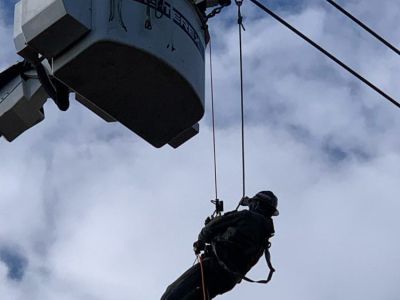
From Risk to Reliability: Improving Rope Safety in Energized Environments
The tools and equipment employed by electrical workers must possess the necessary insulating properties to ensure user safety. One such tool, dielectric rope, can be overlooked as a component of electrical safety, but modern standards and rigorous testing protocols are transforming the way this type of rope is designed, used and maintained.
The transition from use of traditional synthetic ropes (e.g., double-braided polyester or polypropylene with wax or overlay finishes) – which can absorb contaminants and moisture, thereby significantly reducing their insulating properties – to dielectric ropes represents a paradigm shift in safety. Just as hot sticks, fiberglass-reinforced plastic (FRP) tools and arc-rated PPE are subjected to strict ma…
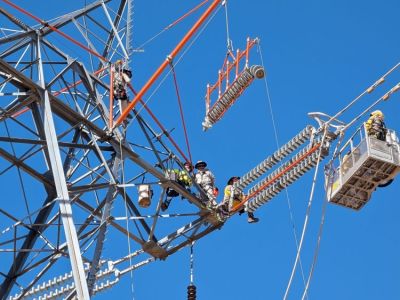
Beyond the ABCs: Fall Protection for Unique Tasks
The electric transmission and distribution (T&D) industry often requires work in challenging environments. Whether crew members access tall structures by helicopter, use rope-access methods to climb lattice towers, or ride wire carts to install and maintain spacers along energized lines, their approach goes beyond standard ground-based operations. These specialized techniques can speed up projects, minimize ground disturbance – especially on protected and sensitive land – and reduce the need for site preparation (e.g., building roads).
Yet all of them present complex fall hazards.
Many readers may be familiar with the so-called “ABCs” of fall protection (anchors, body supports and connectors), but the tasks described above call for mor…

Using the Prediction Model to Prevent Incidents and Near-Misses
As someone employed in the electric utility industry, would you be willing to consider that there may be incident prevention strategies yet to be discovered and tested? Are you open to the idea that a better model could exist to create change in our industry – change that could reduce or even eliminate significant injuries and fatalities (SIFs)?
If so, I encourage you to read further.
Here’s a logical equation many of us were taught in school: If A equals B and B equals C, then A equals C. Tell me, do you believe the organization you work for takes a logical approach to workplace safety? This article will examine some of our industry’s current logic regarding incident prevention and whether there’s room for improvement.
Consider the logic…

Optimizing Arc Flash Protection: The Crucial Role of Layered Clothing
Given the arc flash hazards and other risks that exist in electric utility work environments, an employer’s commitment to employee safety must never falter. It is essential for workers to wear personal protective equipment in these environments; in particular, prior to exposure, workers must don flame-resistant (FR) or arc-rated (AR) garments that meet or exceed assessed incident energy levels.
And while single-layer FR/AR garments are common in the utility industry, it’s important to recognize that they can fall short in areas such as weight, heat retention and comfort. Additionally, although the standard arc rating of 8 cal/cm² is frequently deemed sufficient, employers should be aware that it could leave workers vulnerable in certain ha…
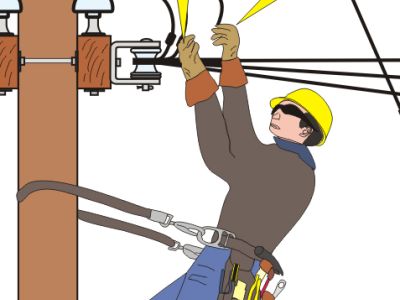
‘The Worst Day of My Life’
This story is about a devastating accident that took the life of one of my best friends many years ago. I have always been somewhat reluctant to speak or write about it because dealing with my friend’s family in the aftermath of his death was extremely painful. As time has marched on, however, I’ve found myself thinking it’s time to share the details of the accident with other lineworkers in hopes of helping them avoid and prevent similar accidents in the future.
Background During my high school years in Salinas, California, I became friends with a fellow student by the name of David White. We became close over time, playing football and hunting together, among other activities. After high school, we were both hired as groundmen by a local…
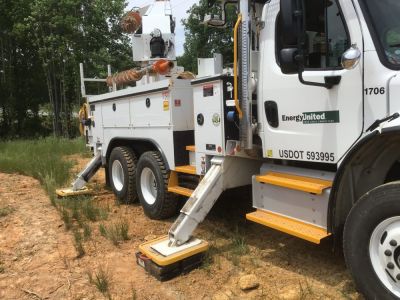
Equipment Stabilization Considerations for Utility Operations
Utility workers face numerous challenges in their quest to build, maintain and improve infrastructure. One significant yet sometimes overlooked challenge is the risk associated with equipment instability. Crucial aspects of equipment setup include stabilization of the machine and selection of appropriate supporting materials – such as outrigger pads and cribbing blocks – to enhance work-site safety.
Case Study: EnergyUnited From busy roadsides to uneven terrain and unstable surfaces, utility workers are no strangers to operating in precarious environments. These conditions can increase the risk of equipment tip-overs, which remain one of the most common – and preventable – job-site accidents. The consequences of such accidents range from e…
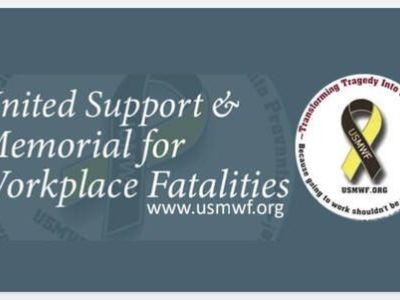
Introducing the USMWF: A Powerful Ally for the Utility Industry
In the world of utility work, where daily tasks often involve inherent risks, the need for a robust support system for workers’ safety and welfare cannot be overstated. This is where the United Support & Memorial for Workplace Fatalities (USMWF) comes in. Established with a mission to honor the memories of fallen workers and advocate for safe workplaces, the USMWF has made remarkable strides in raising awareness, supporting families affected by workplace tragedies and driving meaningful change.
But what exactly does this organization offer to the utility industry, and why should utility professionals consider collaborating with or supporting the USMWF? This article will explore the organization’s background, mission, core activities an…
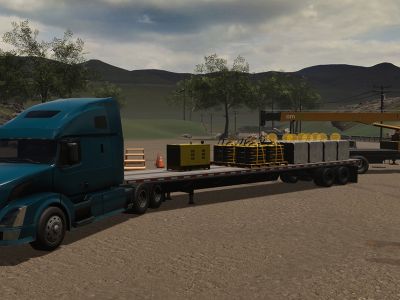
Reduce Risk with New Strategies for Operator Training
Utilities and utility contractors highly value safety. However, labor shortages can sometimes corner field supervisors into making a judgment call about whether an equipment operator is ready for the task. If Foreman A believes an operator is ready after several weeks of training but Foreman B believes the operator still needs several months, who is right? Training directors can support their field supervisors by objectively preparing operators to be ready for hazardous or complex work.
When time is of the essence, especially during storm response to return power to customers, field supervisors need to have confidence in the skill set of their crew. The worst time to find out that an operator isn’t ready is when they’re on the job site wi…

Hand Protection for Electrical Shock and Arc Flash Hazards
Hand protection has evolved in recent times, perhaps making the greatest advancements in the past decade. Although the primary focus of this article is hand protection for electrical shock and arc flash hazards, it also explores the multihazard protection incorporated into newer-generation hand protection, examines safe work practices and glove testing methods, and provides updates on international standards work.
A few decades ago, hand protection consisted of leather gloves (mostly cowhide) used mainly for mechanical protection. Hand protection evolved to address specific hazards, such as extreme heat or cold, vibration, cut resistance, conductivity, electrical (dielectric or voltage rated), and gloves that protect other gloves. Examinin…
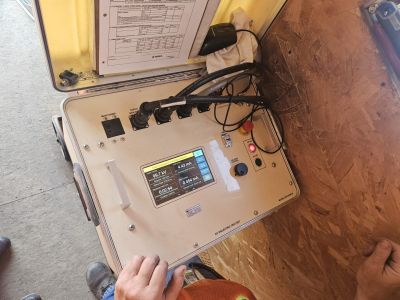
Dielectric Testing for Insulating Aerial Devices
Insulating aerial devices and digger derricks are used to provide a level of protection to their operators and ground personnel who work around energized power lines. Following established safe work procedures is critical, as is testing and maintaining the equipment so that it continues to provide the insulation users expect. You cannot simply look at a unit to determine if it will provide the insulation expected; it must be tested.
There are two types of dielectric tests that must be performed on insulating aerial devices and digger derricks: qualification tests and periodic tests. A qualification test is required to determine the voltage rating of the unit. A periodic test is conducted at intervals to verify that the equipment continues…
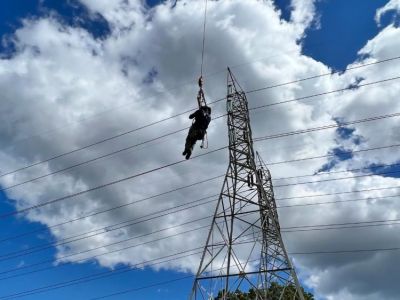
Assessing and Mitigating Risk in Helicopter Line Work
Aerial line work using helicopters is a proven method utilized in our industry to perform certain tasks safely and efficiently. Helicopters have supported the utility industry since 1947. Operators conducting aerial work in support of the utility industry encounter different hazards due to various flight profiles, terrain, infrastructure and weather environments. Aerial work concerning the utility industry exposes aircraft and operators to the same hazards of any aircraft that operates at low altitudes and slow speeds. The first step of a safety system approach to mitigating risk is to define the operational environment and outline the hazards associated with each flight profile.
Risk Assessment Tools and Procedures Line work and flying a…
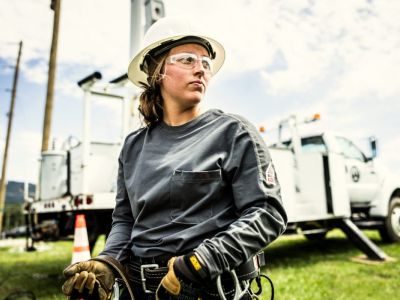
Innovations in FR/AR Clothing: Elevating Comfort for Optimal Performance
In the utility industry, the reliance on flame-resistant (FR) and arc-rated (AR) garments has been a longstanding practice to safeguard workers against arc flashes and flash fires. Crafted from specially engineered, self-extinguishing fabrics and adhering to stringent testing standards, these garments play a crucial role in preventing or minimizing the severity of injuries.
You should know that single-layer FR/AR clothing does not trap heat or restrict heat removal any more than regular non-FR clothing does. A person primarily sheds heat through evaporation of sweat once the air temperature is greater than their body’s temperature. When the ability to sweat is restricted, however, or when it is lost altogether – due to physiological condit…
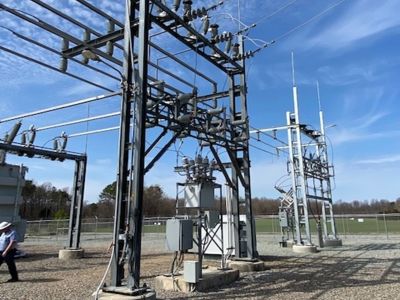
Solar Backfeed Safety on Distribution and Secondary Circuits
Editor’s Note: This timely article specifically addresses the contemporary issue of green-energy backfeed endangering power-line workers. Unlike engine-powered backup generators, green energy makes no telltale noise to alert workers to its presence and possible hazards. Incident Prevention encourages all employers to assess the risks related to backup energy sources and adopt effective storm-work hazard analysis, isolation and other protective procedures for worker safety.
It is night and you are working storm trouble on a single-phase line. The line fuse is blown, and you find wire down. Then you notice that the customer beyond the broken section of wire still has power. Is there a two-way feed on this phase? Did you identify the correct…

An Experiment in Crew Member Engagement
I don’t talk about myself a lot – I listen. I developed this skill after taking on a leadership position with a utility contractor in an industry I knew nothing about.
My work history prior to this role included management in pretty much every industry except utilities. In each of my previous jobs, I strived to learn and advance from an entry-level position. In this new position, I no longer had the advantage of knowing how the company ran from the ground up; I had to trust and depend on others to help me. It did not take me long to realize that safety is the most important priority in this industry. Lack of attention to the detail of safety can kill a lineworker and damage a company beyond repair. So, while you could say our company’s jou…
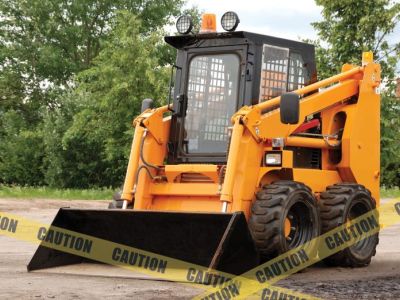
Skid-Steer Loaders: Hazard Awareness and Recommended Safety Practices
In 2009, OSHA published a safety and health information bulletin in part because of the seriousness of injuries that have occurred with skid-steer loaders (see www.osha.gov/sites/default/files/publications/shib011209.pdf). Similarly, NIOSH published an alert in December 2010 in response to the hazards and serious injuries that have occurred with these machines (see www.cdc.gov/niosh/docs/2011-128/default.html).
In their published documents, the two agencies aim to make employers and employees aware of the need to review and follow manufacturer instructions regarding proper use of skid-steer loaders. Both documents emphasize the importance of conducting training on the operation, inspection, maintenance and testing of the machine’s safety d…
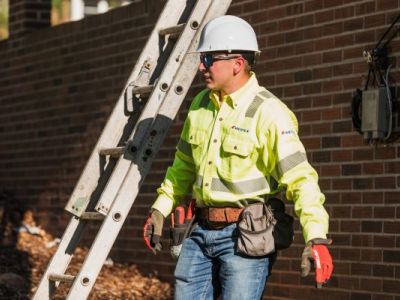
FR/AR Apparel Use: Are Your Workers Properly Trained?
Many workers in the utilities space bravely put their personal safety at risk every day on the job. Facing potential hazards such as arc flashes, flash fires and unpredictable elements of nature, these workers’ personal protective equipment – particularly their garments – is their last line of defense. However, proper apparel use can sometimes be overlooked or deprioritized, putting workers at greater risk of injury.
Whether you’re responsible for a few employees or 1,000, getting your team properly trained in the appropriate use of flame-resistant and arc-rated (FR/AR) apparel helps to ensure that they will return home safely at the end of every shift. In the remainder of this article, we’ll explore five topics to integrate into your team…
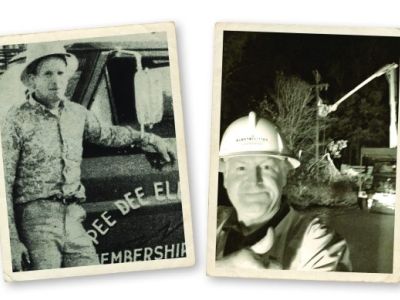
‘It’s a Wonderful Life’: Acknowledging and Safeguarding Our Blessings
In the classic 1946 film “It’s a Wonderful Life,” Jimmy Stewart plays the role of George Bailey. Due to a series of unfortunate events, George makes a desperate attempt to right the things that have turned his world upside down. He even says that maybe things would be better if he had never been born. George then gets to witness what the world would be like if he had never been born. He sees many events that would have taken place differently because he was not there. In the end, George can see all the good his life has brought to others. He sees what a wonderful life he’s had.
Fast-forward to 1989’s “National Lampoon’s Christmas Vacation,” and Clark W. Griswold, too, experiences all kinds of things going wrong. He can’t get the Christmas…
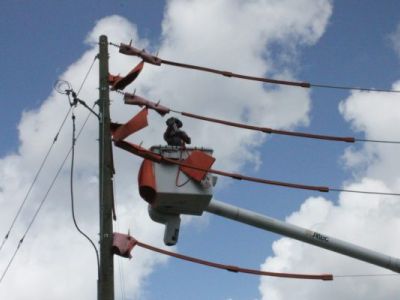
‘Avocado Hand’ and Scaling the Safety Message
Avocado toast has become all the rage at restaurants and on social media posts over the past several years. I eat it; it is delectable. You make it by toasting some bread, adding some ripe avocado and maybe some salt, and then maybe some tomatoes or sprouts. Easy, right?
Now, I want you to think of making this dish, but consider it from a safety angle. Avocado toast can be a hazardous dish to prepare. You must toast bread, which is a potential fire hazard, and you have to cut open an avocado. Unfortunately, people sometimes do this by holding the avocado in their hand, which can result in line-of-fire or knife-related cuts to their hands and wrists. In fact, these injuries are so common that they have a medical term – “Avocado Hand” – and…
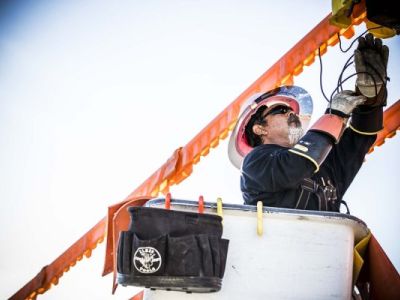
Using Flame-Resistant and Arc-Rated Clothing to Mitigate Cold Stress
Workers in the electric utility industry face various hazards, and in cooler climates, this includes potential cold stress. Cold stress occurs when the skin’s temperature drops, lowering internal body temperature and inhibiting the body’s ability to warm itself. If unchecked, exposure to cold can lead to several medical conditions, including trench foot, chilblains, frostbite and hypothermia.
Flame-resistant (FR) and arc-rated (AR) garments can be worn by workers to help protect them from both cold stress and potential burn injuries due to arc flashes and flash fires. Employers must ensure workers wear the garments properly and consistently to minimize environmental effects. They must also train workers on how to manage their work in cold…

